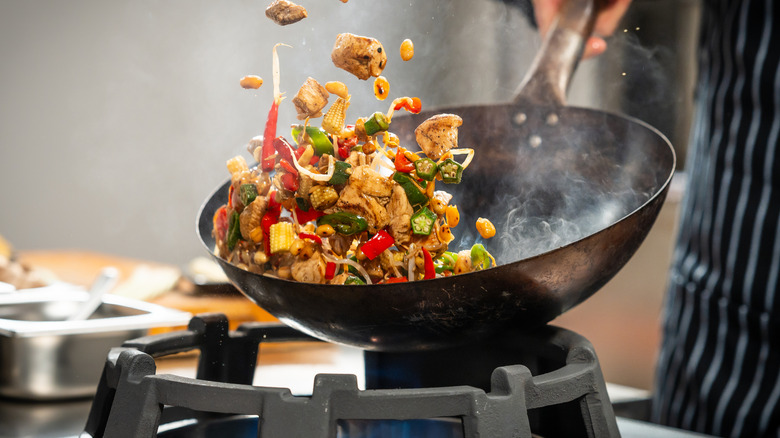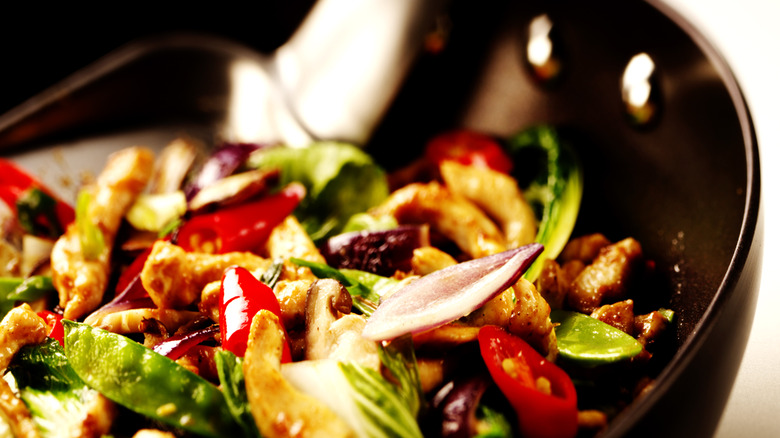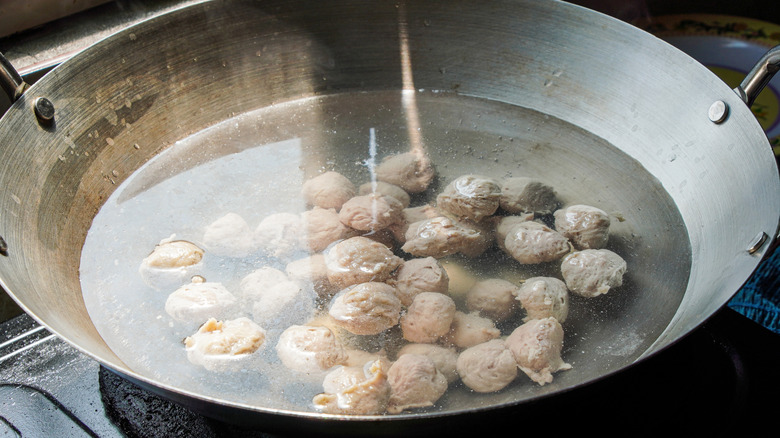Carbon Vs. Stainless Steel Woks: What's The Big Difference Anyway?
In the sizzling world of stir-fries, fried rice, and wok hei (the breath of the wok) magic, the type of wok you use can be a game-changer. This showdown is the battle of the two types of woks: Carbon steel versus stainless steel. These two materials might look similar at a glance, but when it comes to performance, they bring very different qualities to your kitchen. Carbon steel woks, for example, are the darlings of professional kitchens for their ability to handle high heat and develop a natural non-stick patina over time. Stainless steel woks, by contrast, prioritize ease of maintenance and resilience, making them a dependable option for home cooks.
So, which wok wins? The twist is that the right wok for you depends on your cooking style, commitment to maintenance, and what you're looking to achieve in the kitchen. Do you value intense, even heat and that signature smoky wok hei? Or do you lean toward versatility and fuss-free cleaning? Whether you're tossing noodles like a pro or simply perfecting your stir-fry game, understanding the key differences between these materials will help you bring out the best in your dishes. Let's dive deeper into the differences.
Carbon steel woks: the chef's secret weapon
Carbon steel woks are practically synonymous with authentic Asian cooking. Lightweight yet durable, they heat up incredibly fast and retain high temperatures, essential for quick stir-fries that demand precision and speed. However, their real claim to fame is their ability to develop a natural non-stick patina over time. A carbon steel wok becomes a versatile kitchen tool with proper seasoning, perfect for tossing fried rice, searing meats, or sautéing vegetables with minimal oil. This seasoning process enhances the wok's performance and infuses your dishes with the coveted wok hei, that smoky, caramelized flavor only achieved at high heat.
But these woks come with a catch: they require commitment. After each use, they must be cleaned, dried immediately, and occasionally reseasoned to prevent rust. Acidic ingredients like tomatoes or vinegar can strip the patina, which means careful consideration of recipes is essential. While the upkeep might deter some home cooks, the reward is a wok that only gets better with time, delivering professional-quality results from your stovetop. If you're aiming for bold, flavorful dishes and don't mind a bit of maintenance, carbon steel is the way to go.
Stainless steel woks: built to last
For those who prefer low-maintenance cookware, stainless steel woks offer an appealing alternative. Unlike carbon steel, these woks are non-reactive, making them ideal for cooking acidic dishes like tomato-based sauces or citrus-heavy recipes. While they don't develop the non-stick patina of their carbon steel counterparts, stainless steel woks are incredibly durable, resistant to rust, and dishwasher-safe, making cleanup a breeze. Their even heat distribution ensures consistent cooking, although they can take longer to heat up compared to carbon steel.
Stainless steel woks shine in versatility and practicality, particularly for home cooks who value convenience over the high-maintenance demands of carbon steel. These woks are perfect for stir-fries, pan-frying, and steaming, offering reliable performance without the fuss of seasoning or rust prevention. However, they lack the intense heat retention needed for authentic wok hei, which might disappoint purists looking to replicate restaurant-style dishes.
In the end, the choice between carbon steel and stainless steel woks boils down to your priorities. Are you chasing culinary perfection with a wok that ages like fine wine, or do you want a no-nonsense tool that works well every time? Whichever you choose, now it's time to learn how to season a new wok to make the perfect fried rice. Happy wokking!


